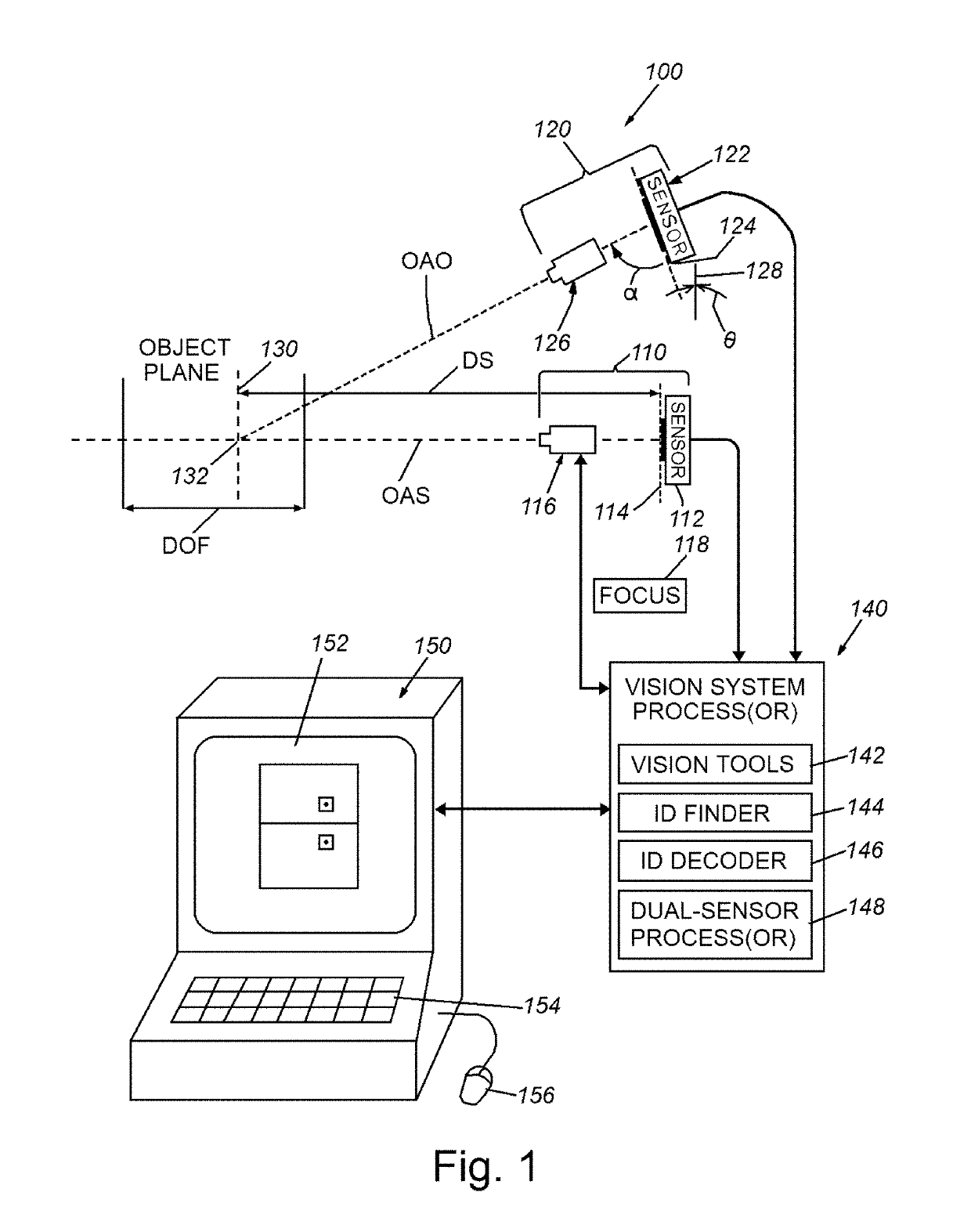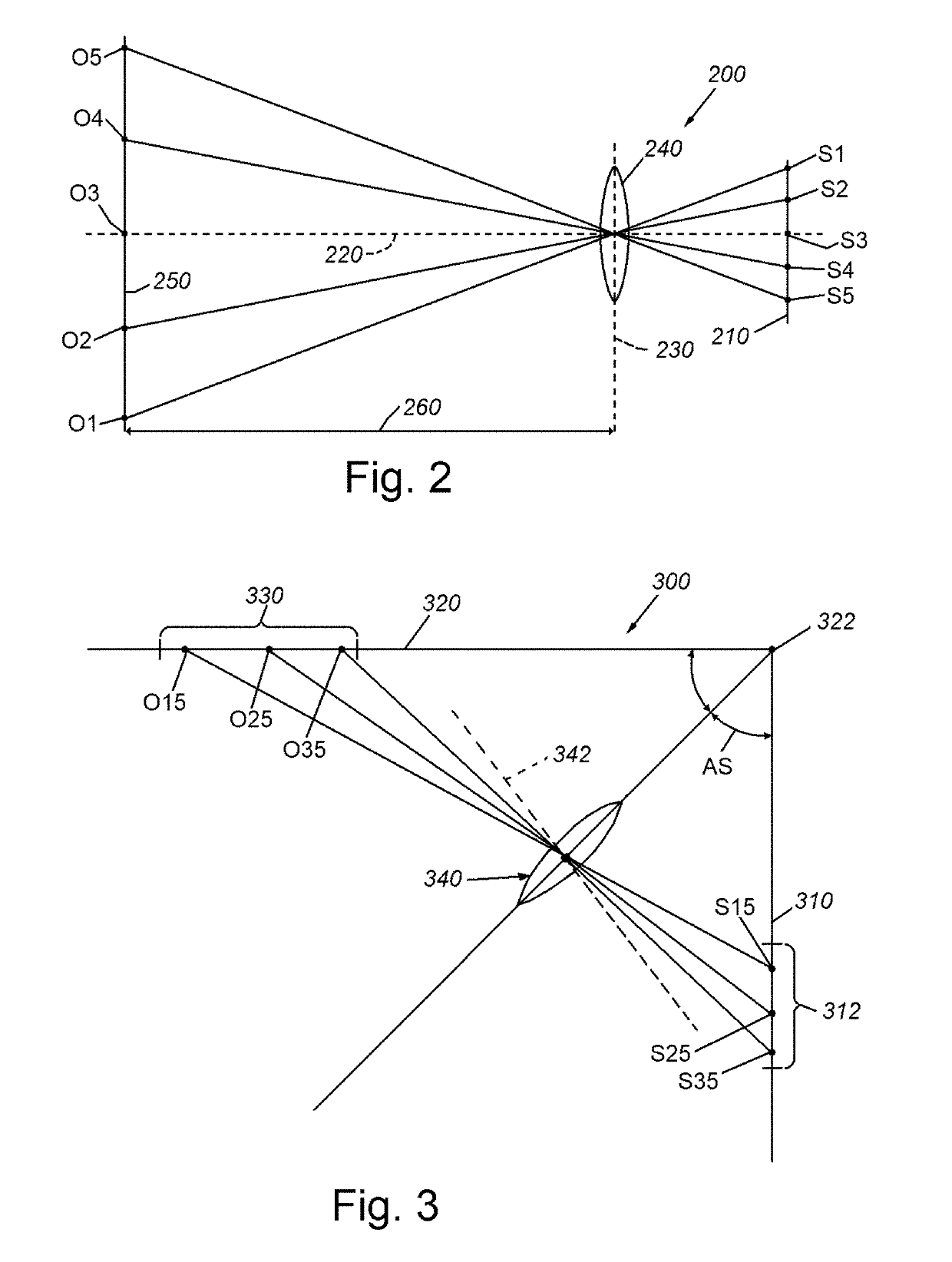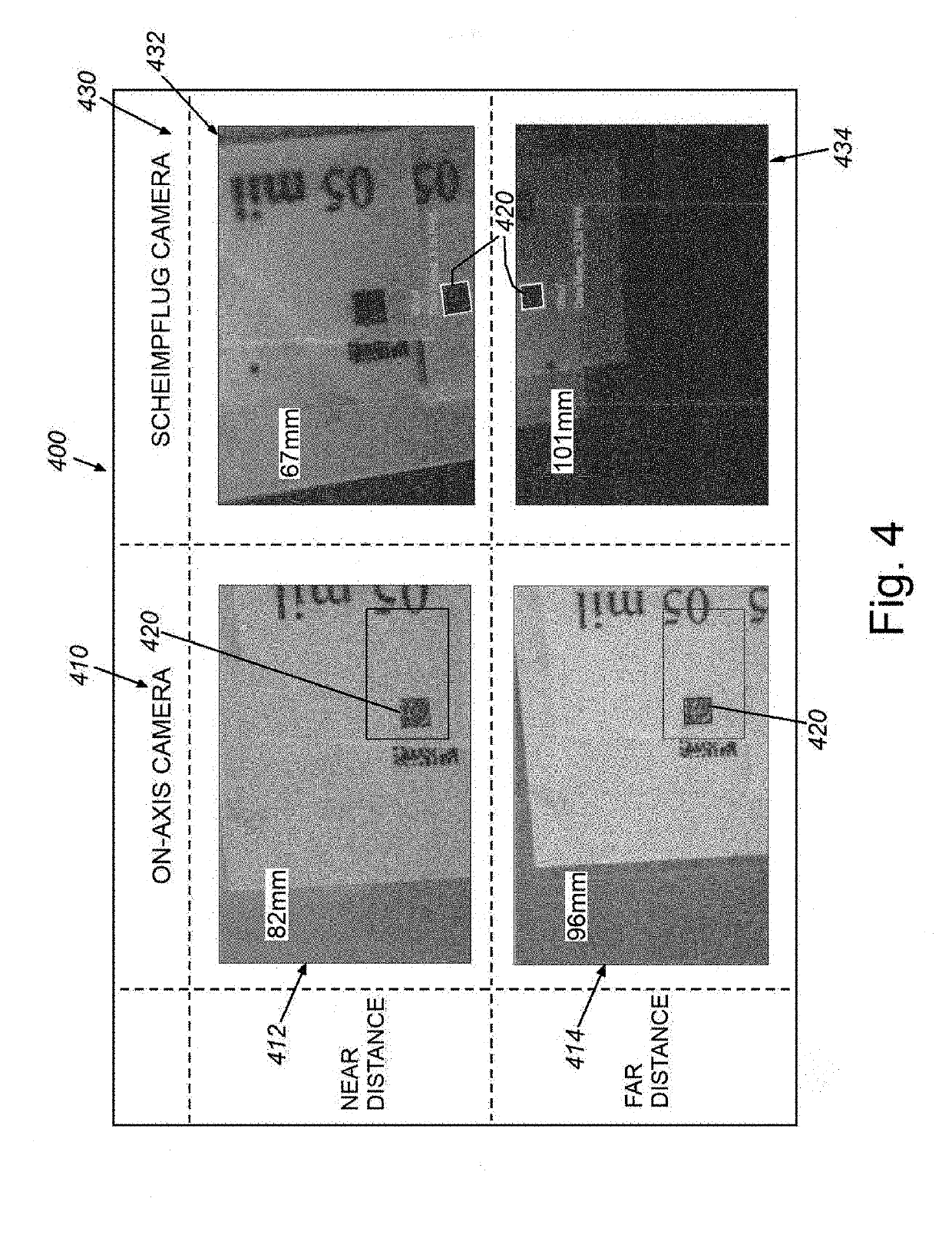Dual-imaging vision system camera and method for using the same
a vision system and camera technology, applied in the field of machine vision systems, can solve the problems of short distances, sensors and optics configured to read at long distances may lack the required dof for such small codes, and achieve the effects of reducing the overall dimensions/volumetric footprint of the system, extending the reading range, and extending the focus rang
- Summary
- Abstract
- Description
- Claims
- Application Information
AI Technical Summary
Benefits of technology
Problems solved by technology
Method used
Image
Examples
Embodiment Construction
[0021]FIG. 1 shows a vision system arrangement 100 for use in providing an enhanced depth of field (DOF) useful in imaging small features, such as ID codes located on imaged object surfaces. The arrangement 100 includes a first imaging system (also herein termed a “camera assembly”) 110 arranged in accordance with a conventional, on-axis (straight-line) configuration with respect to the system optical axis OAS. The on-axis imaging system 110 includes an image sensor (also termed a “sensor” or “imager”) 112 defining an image plane 114 and an optics package 116, that can be any appropriate fixed or removable lens arrangement. This lens arrangement 116 can include a variable focus lens (for example an electronically controlled membrane liquid lens, such as those available from Optotune of Switzerland and Varioptic of France. In such arrangements, the liquid lens can be controlled using any appropriate focus data (for example, detecting sharpness with vision tools, use of range finders,...
PUM
 Login to View More
Login to View More Abstract
Description
Claims
Application Information
 Login to View More
Login to View More - R&D
- Intellectual Property
- Life Sciences
- Materials
- Tech Scout
- Unparalleled Data Quality
- Higher Quality Content
- 60% Fewer Hallucinations
Browse by: Latest US Patents, China's latest patents, Technical Efficacy Thesaurus, Application Domain, Technology Topic, Popular Technical Reports.
© 2025 PatSnap. All rights reserved.Legal|Privacy policy|Modern Slavery Act Transparency Statement|Sitemap|About US| Contact US: help@patsnap.com



